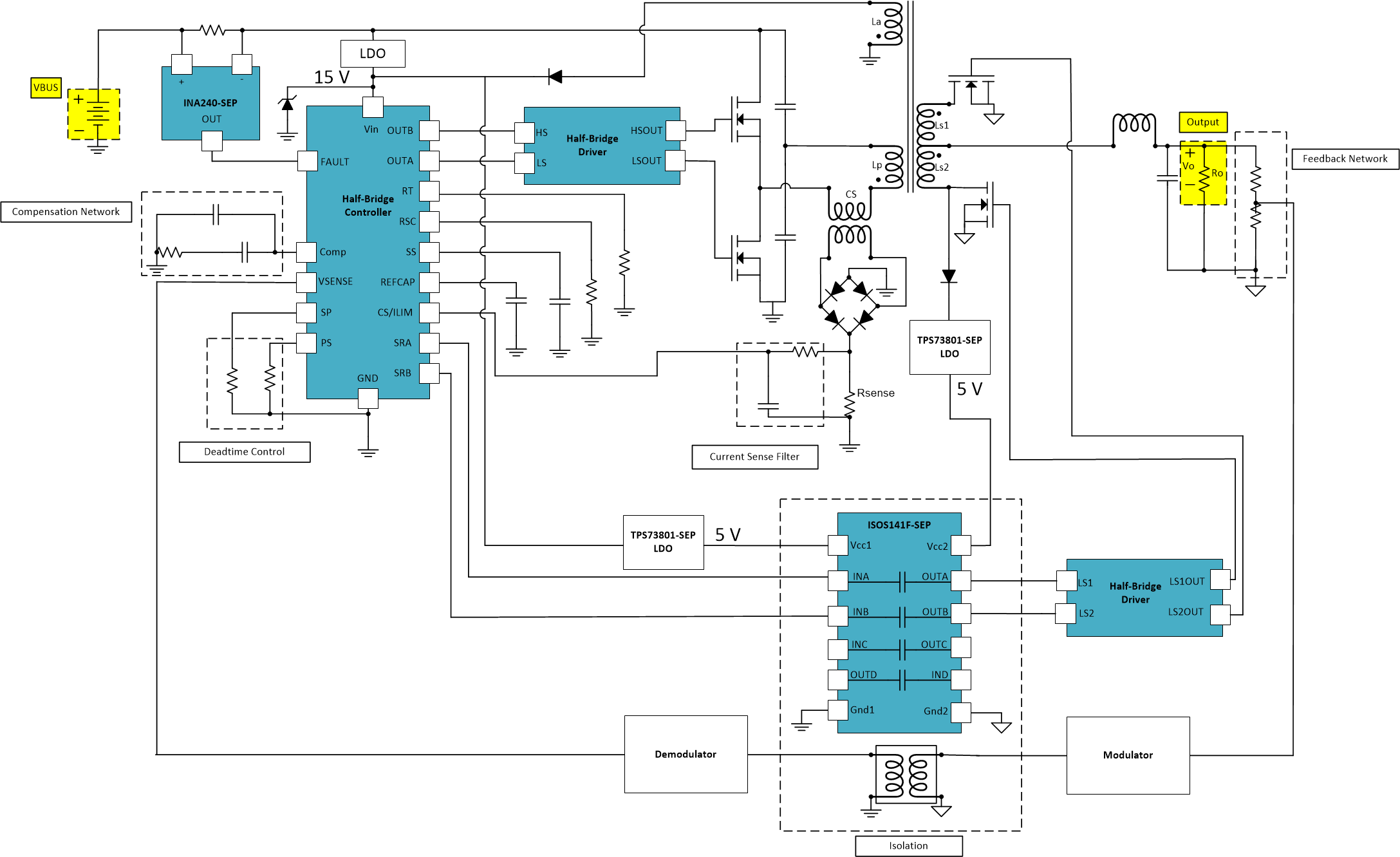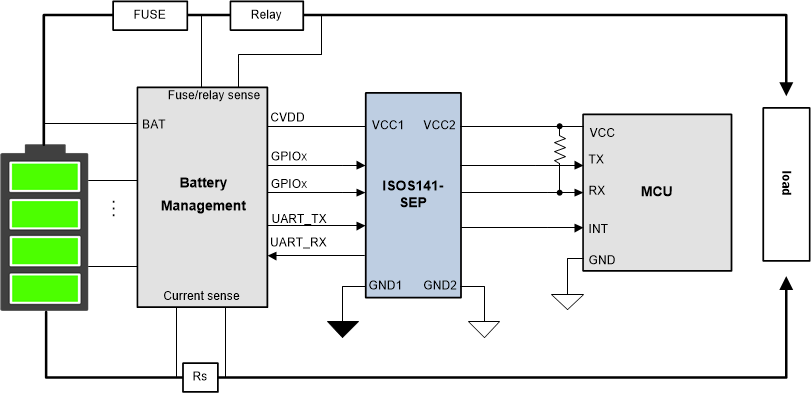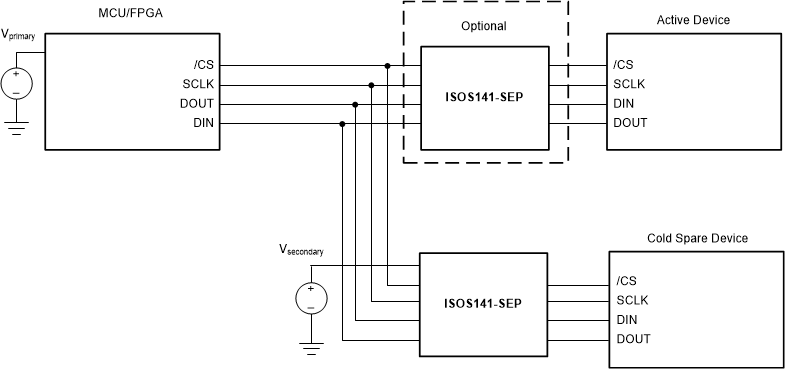SLLA568A October 2021 – July 2022 ISOS141-SEP
1 Application Brief
New satellite constellations and mega-constellations, known as low earth orbit (LEO) satellites, have started the new space race with the goal of providing broadband connectivity to the entire world. These small satellite systems are targeted to grow at an annual rate of 11.7%, reaching 956 units by 2028. This new market is driving a paradigm shift in space applications from historically preferred ceramic packages to the need for radiation-tolerant plastic devices, to take advantage of the performance, weight, size, and cost.
Isolation devices are important in space to enhance system integrity and performance by preventing ground potential differences and improving immunity to noise. Optocouplers and pulse transformers have traditionally been used for isolation. However, optocouplers are known to have poor radiation tolerance on top of already known poor electrical performance and limited channel count per package, while pulse transformers have larger footprints and are harder to design. TI has released the ISOS141-SEP as the industry’s first radiation tolerant, SiO2 based digital isolator in the market. This device combines TI’s long history of advancements in both digital isolation and qualification requirements for a Space Enhanced Product. Unlike optocouplers and pulse transformers, the ISOS141-SEP provides higher continuous working voltages of 600 V, faster data rates of 100 Mbps, low propagation delay and channel-to-channel skew of 10.7 ns and 4 ns max, and provides 100 kV/μs of CMTI. The radiation tolerance provided by TI’s digital isolators of Single-Event Latchup (SEL) and Single-Event Dielectric Rupture (SEDR) Immunity to an LET = 43 MeV⋅cm2/mg, Total Ionizing Dose (TID) characterization and RLAT to 30 krad(Si), and Displacement Damage (NDD) characterization to 1 × 1012 n/cm2 (1-MeV equivalent) make them a robust choice for low earth orbit satellites.
Following are a few key system use cases where ISOS141-SEP can be used in space applications:
GaN-based DC-DC Converters
To help improve the conversion efficiency of power systems, space customers are designing GaN-based DC-DC converters. A digital isolator can be used to isolate feedback channels as well as the PWM signals to the GaN driver. Isolation is required to separate 100's of volts, converted from solar panels to lower voltages (for example, 28 V, 12 V, 5 V) for onboard electronics, as seen in the Figure 1-1 block diagram. Power systems are a critical circuit block in space applications in order to power the entire spacecraft reliably while in orbit and have to be the most reliable while in orbit.
 Figure 1-1 GaN-based DC-DC
Converter
Figure 1-1 GaN-based DC-DC
ConverterBattery Management System
In spacecraft Battery Management System (BMS), isolating I2C, UART, or SPI is needed to protect digital signals between microcontrollers and analog-to-digital converters (ADCs) that are exposed to high common-mode voltages. Isolation is needed to accurately measure the individual cell voltages and monitor battery life, sometimes at millivolts, while rejecting high common-mode noise at several hundred volts. Additionally, for board-to-board communication, interfaces such as CAN, RS-485, and RS-422 are common. These interfaces are used for communication over long distances and should be isolated to prevent large ground potential differences that can cause noise. Since these communication interfaces require isolating multiple channels, digital isolators bring the advantage of small form factor by isolating up to four channels in one package. Traditional optocoupler and pulse transformer solutions only provide one, sometimes two channels of isolation.
 Figure 1-2 Isolating UART and GPIO
signals in Spacecraft Battery Management System
Figure 1-2 Isolating UART and GPIO
signals in Spacecraft Battery Management SystemIsolation
Isolation is needed for cold-sparing applications since it works as a redundant device connected to a common data bus without drawing additional power. It stays in a high impedance power-off state. One of the devices can be operational while the other is electrically isolated from the bus. If the redundant device is needed, it can be powered on without causing system level concerns. TI’s digital isolator provides up to 600Vrms continuous working voltage and passes single-event dielectric rupture (SEDR) at 500 Vdc. To support cold sparring a secondary isolator can be used which is powered up from a secondary supply in order for the path to be active. Using the enable pin to activate or deactivate the output buffers from that specific side of the isolator for the active communication bus will avoid bus contention.
 Figure 1-3 Digital Isolation used in Cold
Sparing
Figure 1-3 Digital Isolation used in Cold
SparingFor LEO satellites, where cost and reliability go hand in hand, plastic packages are becoming the leading choice. Digital isolators in plastic packages are able to isolate signals seen in multiple space applications from power systems to communications payload. It provides better ease of design, radiation tolerance, a multi-channel solution in a single package, while maintaining high isolation integrity when compared to incumbent solutions.